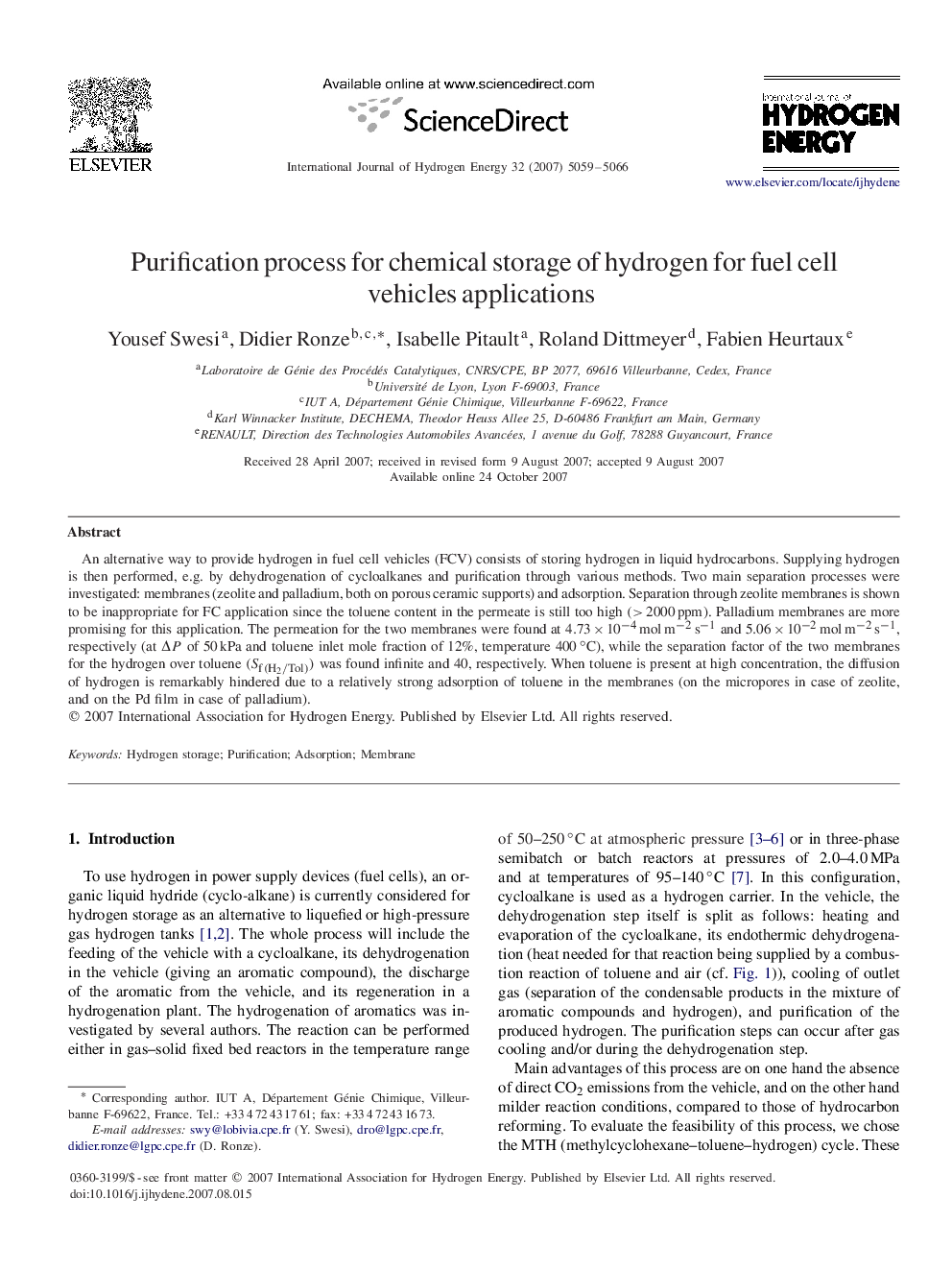| Article ID | Journal | Published Year | Pages | File Type |
|---|---|---|---|---|
| 1283801 | International Journal of Hydrogen Energy | 2007 | 8 Pages |
An alternative way to provide hydrogen in fuel cell vehicles (FCV) consists of storing hydrogen in liquid hydrocarbons. Supplying hydrogen is then performed, e.g. by dehydrogenation of cycloalkanes and purification through various methods. Two main separation processes were investigated: membranes (zeolite and palladium, both on porous ceramic supports) and adsorption. Separation through zeolite membranes is shown to be inappropriate for FC application since the toluene content in the permeate is still too high (>2000ppm). Palladium membranes are more promising for this application. The permeation for the two membranes were found at 4.73×10-4molm-2s-1 and 5.06×10-2molm-2s-1, respectively (at ΔPΔP of 50 kPa and toluene inlet mole fraction of 12%, temperature 400∘C), while the separation factor of the two membranes for the hydrogen over toluene (Sf(H2/Tol))(Sf(H2/Tol)) was found infinite and 40, respectively. When toluene is present at high concentration, the diffusion of hydrogen is remarkably hindered due to a relatively strong adsorption of toluene in the membranes (on the micropores in case of zeolite, and on the Pd film in case of palladium).
